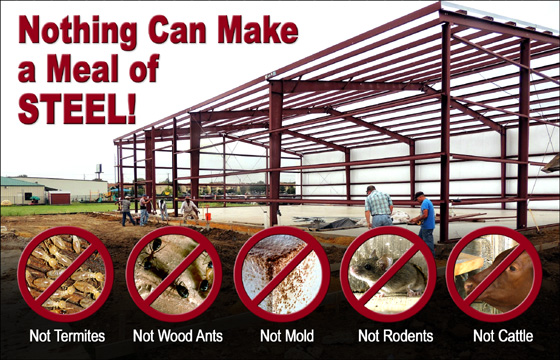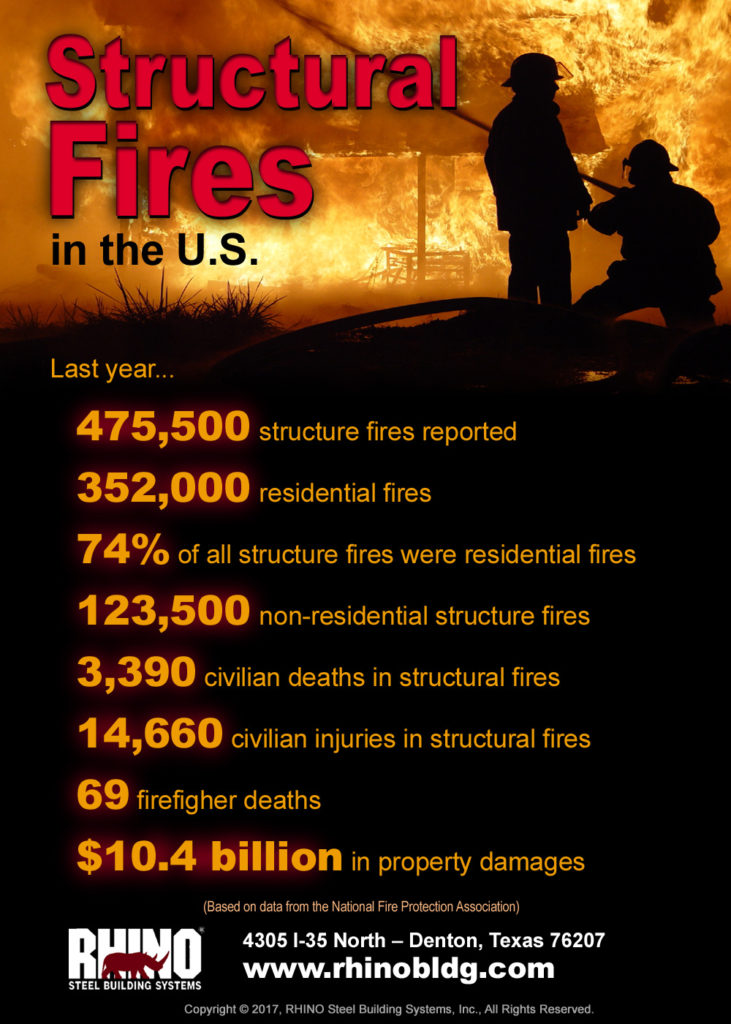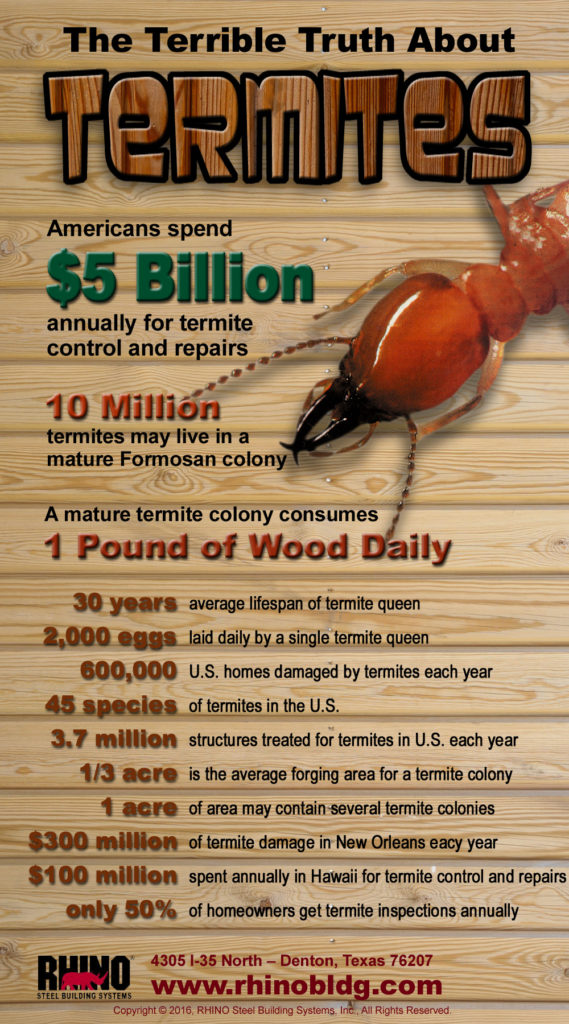How Metal Buildings Beat Wood-Eating Creepy Crawlers
A steel building offers many advantages over a wood building. Lumber simply cannot compete with steel’s strength and durability.
However, one of the strongest arguments for building with steel instead of wood is that steel does not invite creepy crawlers or critters to dinner.
Organic Wood vs. Inorganic Steel
 Wood is organic. It comes from living organisms: trees.
Wood is organic. It comes from living organisms: trees.
As an organic material, lumber is edible. It presents a tasty treat to many living things looking for something to munch on— including insects, rodents, mold, and even livestock.
As a man-made material, steel is inorganic and inedible. Consequently, steel never attracts destructive critters and crawlers.
The Destructive Power of Termites and Wood Ants
How can something like a tiny termite inflict such massive damage? Yet, Americans shell out an unbelievable $5 billion each year for termite control and repairs.
In addition, U.S. residents and business owners spend millions more on carpenter ant prevention and repairs.
Unlike termites, carpenter ants do not consume wood; they simply chew it up and shove it out of the way to make room for their tunnels and nests. They make themselves at home in the lumber framing, weakening the wood as they continually expand their living quarters.
Four-Legged Wood Gnawers
Farmers and ranchers find cattle and horses love to chew on wood-framed barns and livestock structures. Unsure of whether a mineral deficiency or just plain boredom causes the chronic chewing, experts warn that grazing on chemically treated wood endangers the animal’s health.
In recent years, warmer-than-average winters have produced a surprising side effect: rodent population explosions. Mice and rats love to sink their teeth into wood framing.
Rodents invade 21 million U.S. homes each year, plus countless businesses. In addition to the structural damages they inflict, they also spread salmonella and disease-carrying ticks, lice, and fleas.
Rats and mice often chew through electrical wires, dramatically increasing the chance of devastating, life-threatening fires.
The Great Devourer: Fire
While fire is not a living organism, it does feed on wood.
Wood framing is often the point of ignition in many structural fires. Moreover, once a fire starts, the lumber in the structure provides ready fuel to keep the blaze growing and spreading.
Mold Creeps In
Mold needs only two things to thrive: an organic material like wood to feed upon and moisture.
On average, insurance companies pay $2.5 billion annually for mold and water damages.
After flooding disasters, like last year’s Hurricane Harvey, insurance payout rises dramatically. According to the Houston Chronicle, Harvey affected 136,000 buildings in the Houston area. Six months after the hurricane, thousands of people were still dealing with mold damage and repairs.
Mold not only inflicts great structural damage, it also exacts a health toll. According to the World Health Organization (WHO), indoor air quality compromised by mold and chemical outgassing “is a major cause of morbidity and mortality worldwide.”
 How a RHINO Steel Building Battles Bugs and Beasties
How a RHINO Steel Building Battles Bugs and Beasties
None of these wood enemies has a leg to stand on against steel.
Termites and carpenter ants cannot devour steel. Rats and mice cannot attack a steel building. No horse, cow, or goat gets its kicks from chewing on a steel beam. Inorganic steel cannot host mold or mildew. And non-combustible steel is never the point of ignition of a structural fire, nor does steel framing provide fuel to a blaze.
Given all these advantages, is it any wonder that steel framing claims almost 80% of the commercial market and 95% of all industrial building projects?
Discover the benefits of building with RHINO Steel Building Systems. Discuss your upcoming building project today with one of our highly trained and experienced metal building specialists.
Our service is friendly, informed, and free. Call us today at 940.383.9566 for more details and a free quote.

